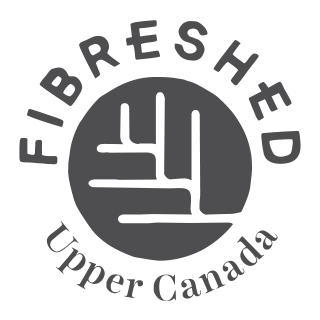Chassagne Shetland Sheep
Puslinch, ON
Website chassagne.ca
Telephone (519) 651-2160
Address
6783 Concession 1
Puslinch
ON
N0B 2J0
Canada
I’m sure that any day you visit Carole Precious at Chassagne you will be inspired and charmed, both by the landscape and your host. The morning I went to pick up some pure Shetland yarn, summer thundershowers were rolling through with that rumbling that both lulls and urges you to shelter. As the rain started to pour down, Carole said, “When I was a child I always ran into the rain, not out of it!” The spirit of that sentiment captured my impression of the farm perfectly. Chassagne is a place that reminds you of the pleasures of a country lifestyle, where many pursuits are enjoyed with passion, determination and hard work.
Set on 92 acres near Puslinch Ontario, the view of sheep grazing on rolling hills surrounded by mixed forest, is stunning. Bordering a conservation area there is an abundance of wildlife, from white tailed deer to avian beauties such as Great Horned owls, Coopers hawks, Pilleated woodpeckers and the endangered Sandhill crane. Farming practices are considerate of these neighbors and respect their natural habitat.
Concern for endangered species, both at home and abroad, is the life blood of the farm and its caretakers. Chassagne is home to the first flock of Shetland sheep, imported from the Shetland Isles to Canada in the 1980’s by Carole’s father in law, Colonel G.D. Dailley. Shetlands were once considered endangered by the Rare Breeds Survival Trust in England. Thanks to the efforts of Colonel Dailley and family, today their numbers are much higher and have been taken off the watch list. The Dailley flock, which is considered Flock #1 in the North American Shetland Sheep Registry, continues to proliferate and hundreds have been sold over the years across Canada and the U.S.A.
Shetlands are classified as a landrace, or unimproved breed, which means that they have been bred traditionally to suit the ecology in which they live. They are part of the Northern European Short-Tail group, thought to have been brought to Europe by the first farmers, and are well adapted to the harsh landscape of Northern Scotland. They are a hardy breed that have maintained many of their survival instincts. Characteristically small with fine wool, they have an enormous variation in natural colour, that Chassagne has worked hard to keep.
There are eleven main colours recognized by the Shetland breed association. They are mostly derived from the Norn language, which is a regional dialect originally spoken in Shetland. Colours run the gamut from white, emsket(dusky bluish-grey), musket (light greyish-brown), shaela (dark steely-grey), black, fawn, moorit (reddish brown), mioget (honey-toned, yellowish-brown), to dark brown (1). The anthropologist in me is completely enthralled with the names for the colour patterns and variations, of which 50% still have the same Icelantic word despite being separated by over 1000 years. To pass those names down over multiple generations shows how deeply rooted in cultural significance this breed is. (2)
The Shetland wool is world renowned for its softness and has some of the finest fibre of the UK breeds. It is loved by handspinners and is a dream to knit with. Given the variation in colour, there is often no need to dye the wool. You can find a variety of Shetland products for sale at Chassagne. Yarns are available in worsted lamb, 2ply sport, 3ply chunky, roving and raw fleece. It is well worth the trip to the farm. While you’re there, ask Carole about her honey, quail eggs and fresh Cornish hens! Or if you are looking for a new painting for you home, she can help you with that as well. We are so pleased to have Carole and her Shetlands as proud members of our fibreshed.
